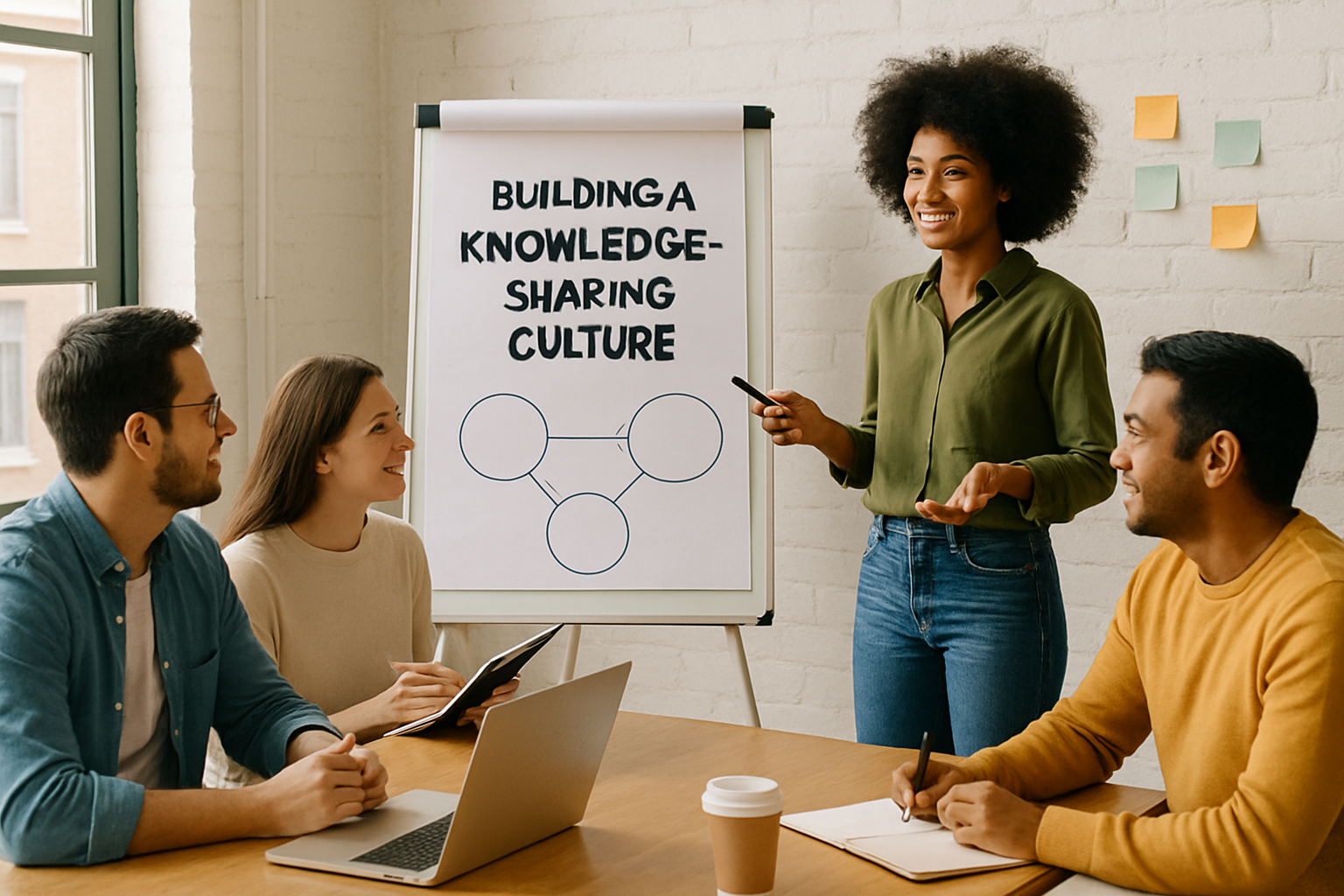
Building a knowledge-sharing culture
In today’s dynamic tech landscape, **knowledge sharing is more than a trend—it’s an operational necessity**. Whether you’re a developer in a global team, a woman entering a male-dominated sector, or a neurodivergent learner navigating new paradigms, the ability to exchange insights is a cornerstone of professional growth and innovation. But how do you intentionally foster a culture where knowledge flows freely, supporting both business goals and individual aspirations?
The Foundations of Knowledge-Sharing Culture
Building a knowledge-sharing culture isn’t about installing new tools or mandating weekly meetings. It’s about creating an environment where curiosity is rewarded, questions are welcomed, and every team member—regardless of background or experience—feels empowered to contribute.
The heart of a knowledge-sharing culture lies in psychological safety: the belief that you can ask, share, or challenge ideas without fear of ridicule or retribution.
This is especially vital for **women in technology** and neurodivergent individuals, who often face additional barriers to participation. When the default is inclusion, innovation follows.
Intentional Leadership and Role Modeling
Change begins at the top. Leaders set the tone by:
- Openly sharing their own failures and learnings
- Encouraging questions, not just answers
- Highlighting diverse voices in meetings and documentation
For example, a CTO might regularly host “Ask Me Anything” sessions, inviting everyone—from interns to senior engineers—to pose challenging questions. When leaders admit what they don’t know, it gives everyone else permission to do the same.
Practical Strategies for Everyday Knowledge Sharing
While vision matters, **tangible practices turn intentions into habits**. Here are some proven approaches:
Documentation as a Living Asset
Technical documentation is often undervalued, yet it’s a powerful equalizer, especially for those who process information differently. Make documentation collaborative:
- Use accessible language and clear examples
- Encourage team members to contribute tips or “gotchas” they encounter
- Assign documentation ownership to rotating team members to prevent knowledge silos
Tip: Integrate documentation updates into your sprint cycles or project retrospectives, making it a routine rather than an afterthought.
Peer Learning and Mentorship
Structured knowledge sharing can take the form of:
- Pair programming sessions
- “Brown bag” lunch talks (virtual or in-person) featuring team members or guest speakers
- Mentorship programs that match experienced professionals with newcomers, prioritizing cross-functional and cross-demographic pairings
Such initiatives not only democratize expertise but also foster relationships across departments and career stages. For women and neurodivergent individuals, seeing people like themselves in knowledge-sharing roles is particularly empowering.
Creating Inclusive Knowledge Channels
Not everyone thrives in the same formats. Consider multiple channels for sharing:
- Written FAQs and wikis for those who prefer text
- Recorded video walk-throughs for visual learners
- Live discussions or forums for those who process ideas best in conversation
Invite feedback on which formats are working—and adapt as the team evolves.
Breaking Down Barriers: Neurodiversity and Diversity in Tech
For too long, tech culture has privileged a narrow set of communication norms—fast talkers, extroverts, those who can “think on their feet.” But true innovation comes when a diversity of thought and communication styles are embraced.
*A knowledge-sharing culture recognizes that the best ideas might come from unexpected places—and in unexpected ways.*
For neurodivergent employees, asynchronous channels (like shared documents or chat threads) allow for thoughtful participation. For those new to the industry, structured onboarding and “buddy” systems normalize asking questions and making mistakes.
Consider implementing:
- Anonymous Q&A tools for all-hands meetings
- Slack channels dedicated to sharing resources, learning, and even mistakes
- Regular check-ins with new hires to ensure they feel included in the flow of information
Celebrating Curiosity and Questioning
Curiosity is the engine of learning. When teams celebrate—not just tolerate—questions, they unlock creativity. Try “question of the week” prompts or “failure Fridays,” where sharing what didn’t work is as valued as sharing successes.
For women and underrepresented groups, these rituals can be transformative, creating spaces where their perspectives and questions are seen as assets, not risks.
Leveraging Technology for Seamless Sharing
Modern tools can help, but they must serve your culture, not dictate it. Choose platforms that are:
- Accessible (with strong search and filtering capabilities)
- Secure, allowing for open sharing without compromising sensitive information
- Integrated into daily workflows—think Slack integrations, collaborative docs, and shared code repositories
Use analytics to identify gaps: Are certain teams or individuals less engaged? Are some topics underrepresented? Let data guide your next steps, but don’t let it replace human intuition and empathy.
Real-World Example: Women-Led Tech Initiatives
Consider a software company where women engineers lead monthly “Tech Deep Dives.” These sessions demystify complex topics and create visible role models. Participation grows, and so does a sense of belonging—especially for junior women and nonbinary technologists.
Or picture a neurodivergent developer who creates a “quiet channel” for sharing resources asynchronously. Suddenly, team members who rarely spoke up in meetings are contributing high-value insights.
*When people see themselves reflected in knowledge-sharing spaces, participation skyrockets.*
Encouraging Continuous Learning and Feedback
Knowledge-sharing cultures are never static. They evolve as teams grow, technologies shift, and new voices join the conversation.
Foster continuous learning by:
- Offering stipends or time for attending workshops and conferences
- Encouraging personal “learning projects” with periodic sharing sessions
- Soliciting regular feedback on which knowledge-sharing practices are effective—and which need adjustment
Feedback loops ensure that your knowledge-sharing ecosystem stays healthy and relevant.
Common Pitfalls and How to Avoid Them
Even well-intentioned efforts can falter. Watch out for:
- Information hoarding: Reward open sharing, not gatekeeping
- Tokenism: Involve diverse voices in designing and leading knowledge-sharing initiatives, not just participating
- Over-reliance on one format: Mix synchronous and asynchronous, written and verbal, formal and informal channels
Above all, keep the focus on **community over perfection**. Messy, organic knowledge flows are better than pristine silos.
The Human Side: Empathy, Patience, and Growth
Building a knowledge-sharing culture is an act of care. It requires empathy for those who learn, communicate, or process differently. It asks leaders and peers alike to listen deeply and to value not just the information shared, but the act of sharing itself.
*Every question asked, every insight shared, is a step toward a more inclusive, innovative future in technology.*
Whether you’re a manager, an engineer, or a student entering the field, your voice matters. Share what you know, ask what you don’t, and help others do the same. That is how we build not just better teams and products, but a better, more equitable world in tech.


